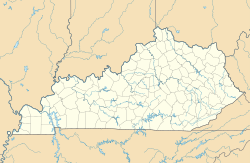Rose Hill | |
| Location | 1835 Hampden Ct., Louisville, Kentucky |
|---|---|
| Coordinates | 38°13′42″N85°41′54″W / 38.22833°N 85.69833°W |
| Area | 0.4 acres (0.16 ha) |
| Built | 1852 |
| Architectural style | Italianate |
| NRHP reference No. | 80001616 [1] |
| Added to NRHP | December 03, 1980 |
Rose Hill is an antebellum house in Louisville, Kentucky. It was added to the National Register of Historic Places in 1980.
Contents
It is located about three miles (5 km) from Downtown Louisville in the Douglass neighborhood of Louisville's Highlands area. It is located just off Bardstown Road.


